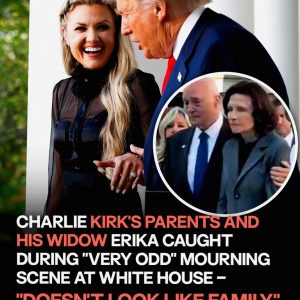## Trump’s Chilling Warning: A First in Presidential History?
In a recent press appearance at a New Jersey airfield, former President Donald Trump startled reporters—and observers—with a remark that democracy watchers describe as darkly unprecedented: **“You’re even in danger talking to me right now.”**
While presidents have often had tense relationships with the media, the notion of a commander-in-chief explicitly warning journalists that *they themselves* might be at risk simply for doing their job breaks new ground. This kind of statement adds a menacing edge to what has traditionally been a fraught—but constitutionally protected—dynamic between the press and the presidency.
—
## What Trump Actually Said (and Why It Matters)
During the media exchange, Trump was responding to questions about potential retaliatory attacks by Iranian proxies. After addressing the security context, he turned directly to reporters and remarked:
> “You’re even in danger talking to me right now … You are in danger talking to me right now, so I should probably get out of here. But you guys are actually in danger.”
Analysts suggest that this statement does more than raise physical or logistical concerns. It signals an escalation in the rhetorical weaponization of fear—implying that reporting itself might carry peril. The effect is to blur the line between governmental power and intimidation.
This is not the first time Trump has used aggressive rhetoric toward the press. Throughout his prior presidency, he frequently labeled major news outlets “fake news,” “the enemy of the people,” and engaged in repeated verbal attacks aimed at discrediting critical journalism. ([Committee to Protect Journalists][2]) But in this instance, by invoking “danger,” he shifts from rhetorical discrediting to a more visceral form of pressure.
—
## Reactions & Concerns
The reaction was swift. Media organizations, press freedom advocates, and constitutional experts sounded alarms over the implications of such language. Many see it as part of a broader trend—a pattern of chilling language and policy moves aimed at silencing journalistic scrutiny.
One such move: the rollback of Justice Department protections that had previously shielded journalists from government subpoenas for their records. Under the new guidelines, reporters who acquire “privileged or sensitive information” critical of the administration may face heightened risk of government targeting. Critics argue this change gives prosecutors too much leeway to go after news sources.
Meanwhile, the Federal Communications Commission (FCC), under leadership aligned with Trump’s administration, has initiated investigations into media outlets such as NBC, NPR, CBS News, and public radio stations—raising fears of regulatory retaliation against editorial decisions. Media experts warn that the message being sent to newsrooms is: tread carefully, or face consequences.
Adding another dimension, The New York Times’ CEO recently called Trump’s $15 billion defamation suit against the paper part of an “anti-press playbook”—a way of burdening independent journalism with legal threats and chilling effects.
—
## Is This Truly a First?
While earlier presidents have spoken harshly of the press—think Richard Nixon’s adversarial tone—none has formally or explicitly warned that journalists might be in personal danger simply for exercising their First Amendment role. That makes Trump’s statement especially jarring to scholars of democracy and press freedom. It pushes the rhetoric beyond criticism into symbolic intimidation.
That said, whether this crosses legal lines is complex. The First Amendment protects a free and independent press, and courts have resisted attempts to punish or silence journalists. But when a political leader frames reporting as dangerous, it shifts public perception in a dangerous direction—one where media work becomes associated not just with power, but with peril.
—
## The Stakes Going Forward
This warning from Trump isn’t just a momentary flash—it may mark a turning point in how political leaders relate to scrutiny and accountability. For democracy to function, the press must be able to ask hard questions, investigate power, and report without fear. When those asking the questions are themselves portrayed as being in danger, the very foundation of transparency is shaken.
As events unfold, observers will be watching to see how newsrooms respond: whether they recoil, retreat, or stand firm in the face of intimidation. The implications are profound—not only for American press norms, but for democracies everywhere.





